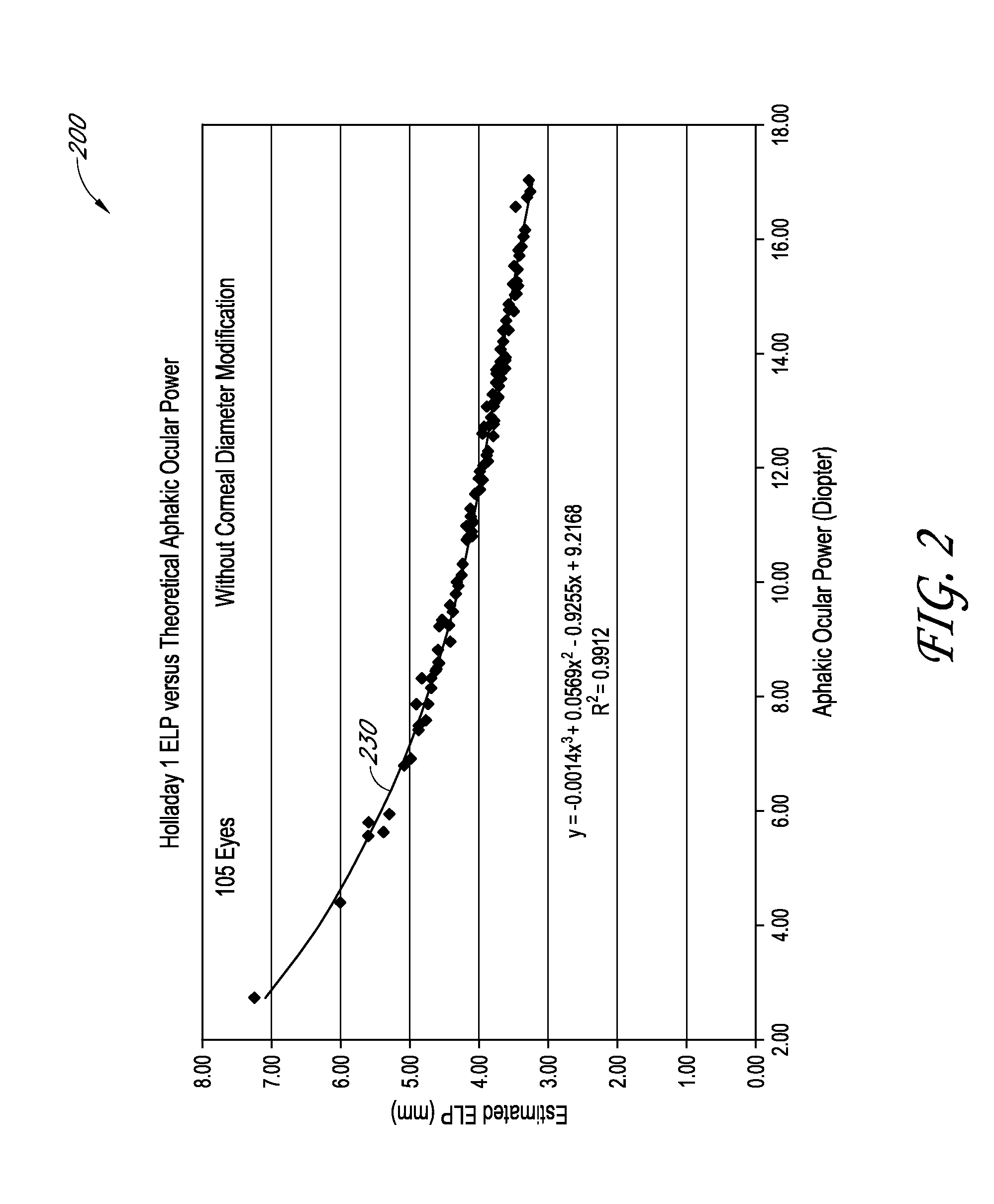Determination of the effective lens position of an intraocular lens using aphakic refractive power
- Summary
- Abstract
- Description
- Claims
- Application Information
AI Technical Summary
Benefits of technology
Problems solved by technology
Method used
Image
Examples
Embodiment Construction
[0019]In a typical cataract surgery, a surgeon removes the natural crystalline lens from a patient's eye and an intraocular lens (IOL) is implanted in its place. By selecting an IOL having an appropriate amount of spherical and / or cylindrical power, an eye that prior to the surgery was, for example, myopic (near sighted), hyperopic (far sighted), and / or astigmatic can be restored to, for example, an emmetropic condition. The determination of an appropriate amount of IOL optical power for a given application is a significant aspect of obtaining satisfactory surgical outcomes for patients. Various factors can be considered when calculating the appropriate power for the IOL, such as 1) the axial length of the eye, for example, measured from the cornea to the retina; 2) the total optical power of the cornea, including its anterior and posterior surfaces; 3) the desired postoperative optical power (e.g., 0.0 diopters (D) of defocus for an emmetropic eye); and 4) the effective lens positi...
PUM
 Login to View More
Login to View More Abstract
Description
Claims
Application Information
 Login to View More
Login to View More - R&D
- Intellectual Property
- Life Sciences
- Materials
- Tech Scout
- Unparalleled Data Quality
- Higher Quality Content
- 60% Fewer Hallucinations
Browse by: Latest US Patents, China's latest patents, Technical Efficacy Thesaurus, Application Domain, Technology Topic, Popular Technical Reports.
© 2025 PatSnap. All rights reserved.Legal|Privacy policy|Modern Slavery Act Transparency Statement|Sitemap|About US| Contact US: help@patsnap.com



